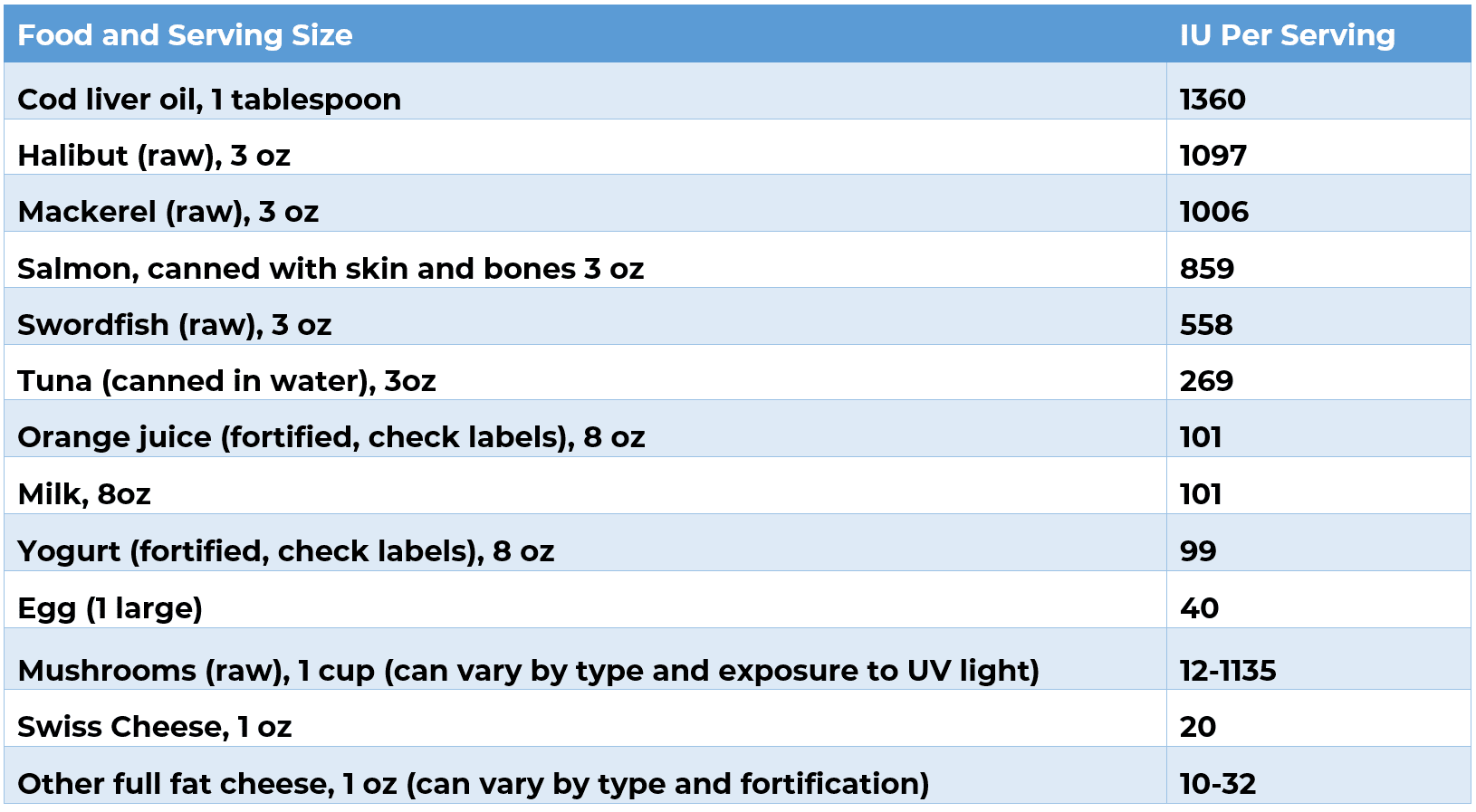
Brrrrrr! Cold New England winters with their shorter days make it easy to cozy up with a blanket and stay inside all day. Trouble is, inadequate sunlight exposure can put you at risk for low vitamin D levels, even if you make it outside during daylight. So why is that a big deal and what can be done about it? Find out in this blog post.
The deal with vitamin D
Vitamin D a.k.a the “sunshine vitamin”, comes in two forms naturally:
- D2 (ergocalciferol): Can be found in plant-based foods, especially fungi.
- Fun fact: mushrooms are the only vegetable that naturally produce vitamin D from exposure to sunlight (like we humans do).
- D3 (cholecalciferol): Naturally produced in skin of humans with exposure to sunlight and likewise can be found in animal sources like salmon, swordfish, tuna, egg yolks, cod liver oil, and Swiss cheese.
Both forms can be made synthetically and added to foods, or made into supplements. Both forms are metabolized in the body the same way and thus the term “vitamin D” may be used to describe either.
Which type is better?
Hard to say. According to the National Institute of Health, there isn’t enough information available to determine definitively what type of vitamin D is better, though some studies suggest D3 may have an edge over D2 in some respects. The good news is that both can be converted in the body to the active form (calcitriol) that is needed for function, so whether it’s coming through dietary sources or sunlight, you can get the vitamin D your body needs.
What does it do for me?
- Vitamin D helps you to absorb calcium and phosphorous from the foods you eat. Therefore, it helps to strengthen bones preventing debilitating diseases like osteomalacia, osteoporosis, and rickets in children. Something to think about: The incidence of rickets was dramatically reduced in the U.S. since the introduction of vitamin D fortified milk in the 1930s.
- It may reduce risk of chronic diseases like type 2 diabetes.
- It’s involved in brain development and contributes to mental health.
- It may also have a role in several other functions, but more research is needed.
How much do I need?
The RDAs (recommended intake levels to meet nutrient needs) for vitamin D for much of our life is 600 IU (International Units) or 15 mcg (micrograms). The exception being for infants (0-12 months old) who need 400 IU (10mcg), and older adults (over 70 years old) who need 800 IU (20mcg).
What are vitamin D sources?
The sun, when you can get it. This also depends on other factors, including UV index, your geographical location, time of day you are outside, and whether you use SPF protection.
Supplementation is an option, but a more delicious way would be to plan your menu to include your favorite dairy foods paired with other foods containing vitamin D (natural or fortified) like fish (especially the skin), eggs, and orange juice (just to name a few).
Check out some of the top vitamin D food sources according to the USDA Food Composition Database:

We hope you catch some winter sun rays in the next few months, but also plan to think through your menu to cover your bases. Here are some recipes that include vitamin D food sources:
- Cold Buster Smoothie
- Breakfast Casserole or Spinach and Mushroom Crepes
- Milk-Poached Salmon or use this method on your favorite fish
For more nutrition information and recipes, follow us on social media @NewEnglandDairy.



